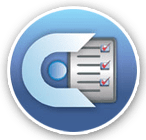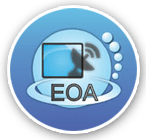It systematically gauges how well students learn and perform compared to set standards. This process uses various methods, such as tests, projects, and observations, to provide insights for improving learning outcomes.
Decoding Evaluation in Education
Formative Evaluation: This ongoing assessment helps teachers understand what students have learned and what they still need to grasp. For instance, conducting tests every three months allows teachers to adjust lesson plans accordingly. Research shows that formative assessment can increase student learning gains by up to 30%.
Examples:
• Quizzes: Short quizzes after a lesson to gauge understanding of the day's topic.
• Homework Assignments: Regular assignments that provide insight into individual student's comprehension and skills.
• In-Class Activities: Activities such as group discussions or hands-on projects that allow for immediate feedback and adjustments to teaching strategies.
• Observations: Informal assessments through classroom observations, noting student engagement and understanding during lessons.
Summative Evaluation: This happens ideally at the end of the academic year, and it determines whether students progress to the next grade. Studies indicate that when aligned with learning objectives, summative assessments can predict academic success.
Examples:
• Final Exams: Comprehensive exams that cover all the material taught during a course.
• Standardized Tests: Tests that measure student learning against a common set of standards, often used for state or national benchmarks.
• End-of-Unit Projects: Projects that require students to apply what they've learned comprehensively and creatively.
• Portfolios: A collection of a student's work over a period that showcases their learning progress and achievements.
Diagnostic Evaluation: This assessment pinpoints students' weaknesses, aiding targeted interventions for improvement. Research suggests that diagnostic evaluations can lead to a 17% increase in student performance.
Examples:
• Pre-tests are tests given at the start of a new unit or course to assess students' prior knowledge and skills.
• Skills Checklists: Lists used to evaluate individual student skills and knowledge base before starting new instruction.
• Learning Style Assessments: Surveys or questionnaires that help identify students' preferred learning styles to tailor instruction accordingly.
Levels of Evaluation
Self-referenced: Teachers can track student growth by comparing past and present performance. Studies have found that self-referenced evaluation fosters a growth mindset, increasing student motivation.
Examples:
• Learning Journals: Students maintain journals to reflect on their learning progress, challenges, and achievements.
• Portfolio Reviews: Comparing current work with past submissions in a portfolio to assess individual growth.
• Goal Setting and Review: Students set learning goals and periodically review their progress.
Criterion-referenced: This evaluation compares students' performance against predefined standards. Studies show that criterion-referenced assessments help identify learning gaps, leading to more effective instruction.
Examples:
• Rubric-Based Assessments: Using detailed rubrics to grade student projects, presentations, or papers against specific criteria.
• Skills Demonstrations: Assessments where students must demonstrate a particular skill or competency defined by the learning objectives.
• Benchmark Assessments: Tests administered throughout the school year to assess progress towards meeting grade-level standards.
Norm-referenced: Comparing students' performance within a group helps identify areas needing improvement. Research indicates that norm-referenced evaluation can lead to more equitable learning outcomes.
Examples:
• Standardized Test Percentiles: Scores showing how students' performance compares to the norm groups'.
• Class Rank: Ranking students within a class or grade level based on academic performance.
• Comparative Reports: Reports showing how an individual's performance compares to the group average.
Benefits of Using Different Evaluation Methods
• It improved program quality and efficiency.
• It has enhanced teaching and learning processes.
• Informed decision-making and strategic planning.
• Generation of reliable insights for improvement.
• Facilitation of seamless planning, implementation, and evaluation cycles.
Understanding Evaluation: Contrasts Between Schools and Colleges
Evaluation practices vary between schools and colleges, reflecting students' distinct educational landscapes and developmental stages. Let's delve into the nuances of evaluation in these two settings and explore a case study to illustrate these differences.
Evaluation in Schools
In schools, evaluation tends to be more frequent and formative. Teachers conduct ongoing assessments to gauge student progress and adjust instruction accordingly. These assessments may include quizzes, homework assignments, class participation, and periodic tests. The emphasis is on continuous feedback and support to facilitate learning.
Evaluation in Colleges
Conversely, college evaluation often involves summative assessments at the end of a course or semester. These assessments, such as final exams, term papers, and projects, aim to measure students' overall understanding and mastery of the subject matter. The focus shifts towards assessing students' ability to synthesize information, think critically, and apply concepts.
Case Study: Contrasting Evaluation Practices
Let's consider a case study comparing evaluation practices in a high school and a college:
High School Scenario:
At a high school, Ms. Smith, a history teacher, employs various formative assessment strategies to gauge her students' understanding of key historical events. She regularly assigns short quizzes and class discussions to assess comprehension. Ms. Smith also provides timely feedback on homework assignments to help students improve. As the end of the semester approaches, she administers a comprehensive exam covering the entire curriculum. The goal is to ensure that students have acquired a solid foundation in history before advancing to the next grade level.
College Scenario:
In a college history course, Professor Johnson adopts a different approach to evaluation. Throughout the semester, students engage in in-depth discussions, research projects, and essay assignments requiring critical historical event analysis. Professor Johnson emphasizes independent thinking and scholarly inquiry, encouraging students to explore complex historical issues from multiple perspectives. At the end of the semester, students complete a final research paper that synthesizes their learning and demonstrates their ability to conduct original historical research.
Key Differences:
• Frequency: Evaluation in high schools tends to be more frequent, with ongoing assessments throughout the semester, while colleges typically rely on fewer but more comprehensive summative assessments.
• Focus: High school evaluation often focuses on assessing understanding and providing feedback to support learning, whereas college evaluation emphasizes critical thinking, analysis, and knowledge synthesis.
• Purpose: In high schools, evaluation aims to track student progress and ensure mastery of foundational concepts, while in colleges, evaluation measures students' ability to apply knowledge in complex contexts and contribute to scholarly discourse.
By understanding these distinctions, educators can tailor evaluation practices to meet the unique needs of students at each educational level, fostering growth and academic success.
Conclusion: Fostering a Culture of Assessment
Evaluation is key to nurturing student growth and enhancing teaching practices. By understanding and utilizing diverse evaluation methods, educators can tailor instruction to meet the needs of every learner, leading to improved academic outcomes and student success.







